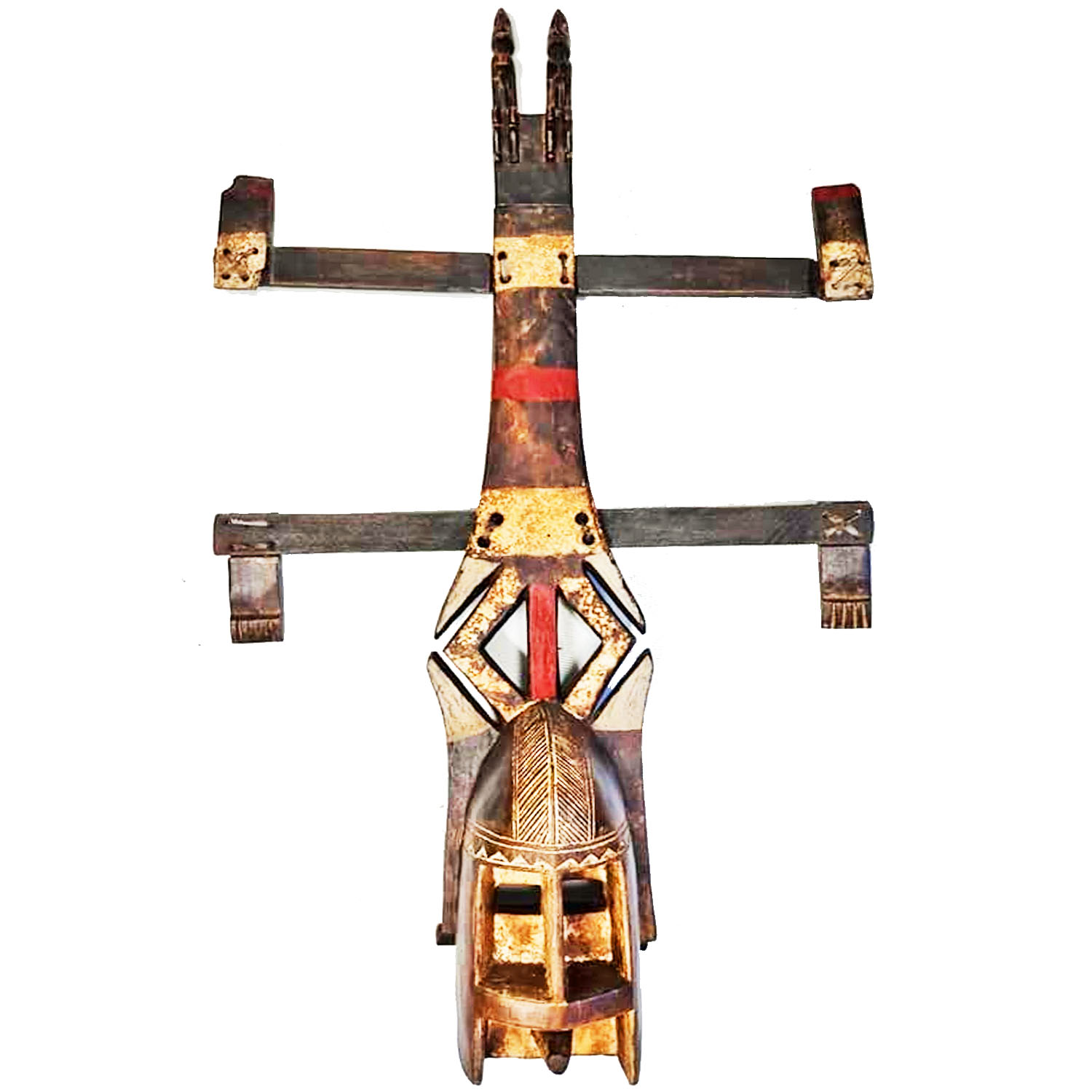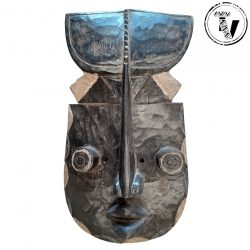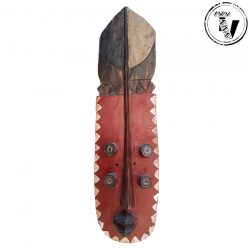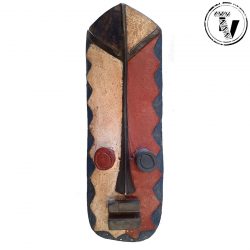Description
Dogon Kanaga Ritual Mask
One of the most popular types of masks in the Sanga region is the type known as kanaga.
Like other Dogon masks, kanaga masks are worn at rituals called dama,
whose goal is to transport the souls of deceased family members away from the village
and to enhance the prestige of the deceased and his descendants by magnificent
masked performances and generous displays of hospitality. In 1935,
French anthropologist Marcel Griaule witnessed a dama ritual in which
twenty-nine out of a total of seventy-four masks were of the kanaga type.
These masks are characterized by a wooden superstructure in the form
of a double-barred cross with short vertical elements projecting from the tips of each horizontal bar.
When the mask is worn, the back of the dancer’s head is covered usually covered with a hood of plaited fiber fringe at the bottom edge.
The dancer wears a vest made of black strip-woven cloth and red broadcloth strips embroidered with white cowrie-shells;
strands of glass and plastic beads dangle from its edges.
The kanaga dancer also wears a pair of trousers made of indigo-dyed, strip-woven cotton cloth,
over which he ties a long skirt of curly, loosely strung, black-dyed sanseveria
fibers and short overskirts of straight red and yellow fibers. For a traditional dama,
the preparation and dyeing of the fibers are undertaken with as
much secrecy and ritual as the carving of the wooden mask.
During the time spent by Griaule among the Dogon studying their complex belief system,
he was initially told that the kanaga mask represents a bird with white wings
and black forehead, but he later came to see this literal interpretation
as characteristic of the first level of knowledge, that of the uninitiated.
The deeper meaning of the kanaga mask apparently pertains both to God,
the crossbars being his arms and legs, and to the arrangement of the universe,
with the upper crossbar representing the sky and the lower one the earth.
The disparity between these two interpretations illustrates the gaps in our understanding of Dogon art.






